
From my 1790's Dotted Swiss dress, this is actually a method gleaned in vintage sewing from the 1930's and can be applied to all time periods to ensure presicion in marking, pleating, draps, and darts.
The main thing I was concerned about was marking the placement for the casing for the under bust drawstring. This fabric is extremely delicate and vintage and I've been hording it for three years to make a regency out of, so I wanted to make sure I didn't mess it up. There can be no seam ripping on this fabric because it would simply destroy it. I'm guessing it's from the 1930's if not earlier, and as such I don't want to wash it more than I have to. I could mark it with a pen or a pencil, but that would require washing. So I used my favorite technique for 1930's sewing- thread marking. I'm not sure if you all are familiar with it, but I know I wasn't and it was a fabulous revelation for me when dealing with pleat placement or delicate fabrics.
Luckily for me, this fabric has a grid woven into it. If that's not the case for you, then you could use a seam gauge to measure the distance to make it even while sewing or mark the line with pins. You are to do this on the double thickness of fabric, so as to mark both sides evenly (just like when you cut it out).
I ran a large-ish running stitch in a contrasting color through the fabric at double the thickness. Add a cross mark at the center front of the top and at the line, or through the whole length of the piece.
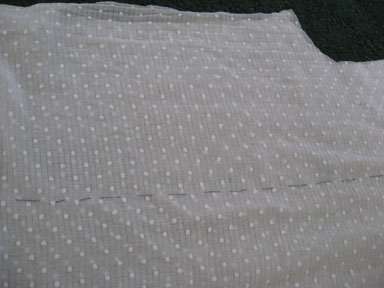
Next you go through and snip the top threads
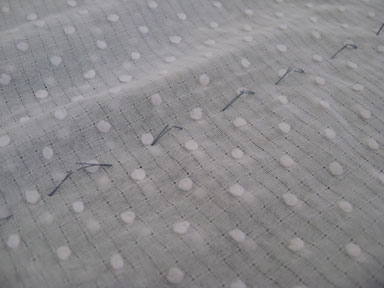
Then you carefully fold back the top layer just to where the thread is attach and taking little nippers, cut the thread in the center of the two layers. Be super careful to not snip your fabric!
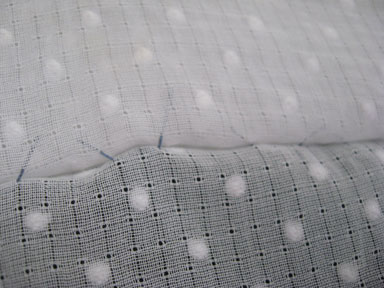
So you can see, there's a thread mark on each side of the fabric. I lightened it so you can see better where the theads are:
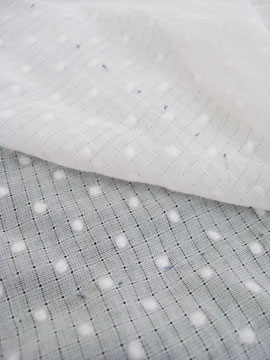
I used this straight dotted line created by the threads to provide a guide for my bias casing, and, you can see, I left an opening at the cross mark at center front through which to tie my ribbon when I gather in the fullness.
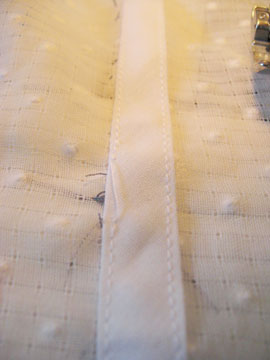
For the whole bodice I used French seams with the exceptions of the side seams. Where I could I cheated by using the selvage, but if that wasn't possible I folded back the allowance on itself and stitched close to the edge- another vintage seam finishing technique. Both of those methods are especially good for sheer and delicate fabrics since a serger would eat through them and a pinked edge would quickly ravel because of the looseness of the weave.
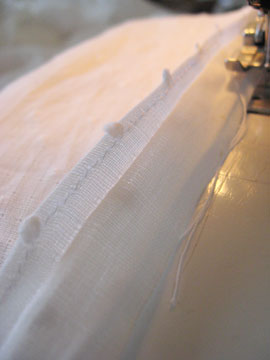
When you are finished grab one of the lint rollers (if you have a cat you will know what I mean) and that picks up most of the little threads. The rest you'll just have to pluck out with your fingers.
Back to the 1790s Dotted Swiss
Back to Reference